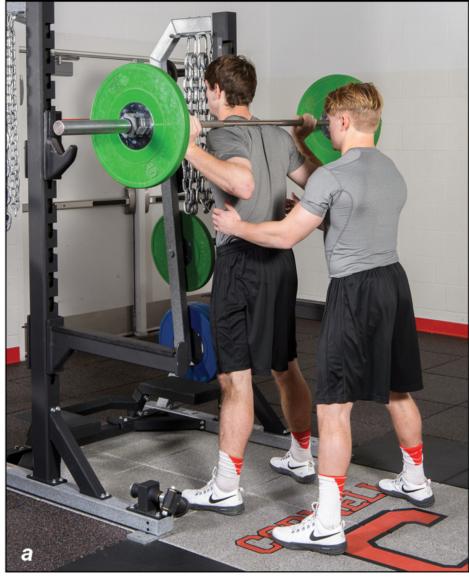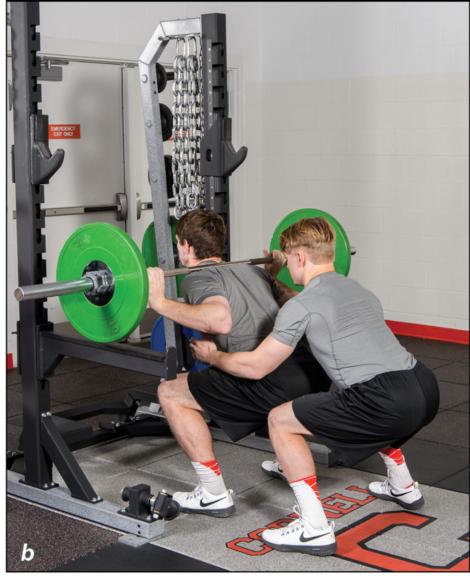Back Squat Test
This is an excerpt from Complete Conditioning for Lacrosse by Tom Howley.
One of the best indicators of lower-body and core strength is the back squat. This king of exercises is a great way to assess the strength and flexibility of all lacrosse players, regardless of position. A word of caution is necessary before moving forward: Technical precision must be employed when conducting this test. The positioning of the feet along with having the correct hip and knee angles is crucial. Maintaining a tight back and core is essential to maximizing the benefits of this movement. If any concern exists about an athlete's technique, consider postponing the test until the athlete demonstrates proficiency.


Back squat test.
Purpose
This test measures hamstring, quad, glute, low-back, and core strength.
Equipment
Squat rack, Olympic barbell, plates, collars
Setup
Stand in front of a bar as it is secure in a squat rack. A spotter should be on hand to assist. Before testing, the athlete should perform 3 to 5 warm-up sets consisting of 1 to 6 reps each.
Procedure
- Using a grip that is slightly wider than shoulder width, place the bar behind the shoulders approximately 2 inches (5 cm) below the top of the trapezius muscle, and lift the bar off of the rack (figure 2.3a). The feet should be slightly wider than shoulder width and may be turned outward at a 30-degree angle.
- Lower the hips back, keeping the shins perpendicular to the floor and the back tight at all times. At no time should the knees turn inward toward the center of the body. In the bottom position, the hamstrings are at least parallel to the floor (figure 2.3b). Keep the chest up, back flat, and weight back on the heels.
- At the bottom of the movement (when the hamstrings are at least parallel to the floor), drive the bar upward, raising the hips and shoulders at the same rate of speed. If the hips accelerate faster than the shoulders, more stress will be placed on the low back and the athlete may lose proper positioning.
- The back should remain tight throughout the movement, with the head and eyes focused on a point straight in front of the lifter.
- Be sure to keep the knees aligned with the feet throughout the descent and ascent. The knees should never rotate inward at any time.
- The athlete should finish the movement by returning to the start (standing) position.
- A one-rep maximum or multiple-repetition maximum may be used. For multiple-rep maxes a 2- to 10-rep range is recommended.
Results
The norms for the back squat test are provided in table 2.4.

Learn more about Complete Conditioning for Lacrosse.
More Excerpts From Complete Conditioning for LacrosseSHOP

Get the latest insights with regular newsletters, plus periodic product information and special insider offers.
JOIN NOW


